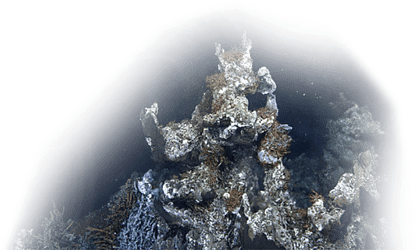This expedition aims to discover, explore, and monitor deep-sea ecosystems while sharing the joy of discovery of the incredible life and wonders hidden far below the waves. Owing to the region’s uniquely small, active, and nearshore tectonic plates, there is an incredible concentration of seamounts, hydrothermal vents, and cold seeps that are globally rare biodiversity hotspots. We will collect scientific data to inform the conservation and monitoring of these ecologically and biologically significant areas. While the main goal is conservation through protection and recovery, the expedition partners recognize the importance of their research in ensuring healthy oceans for all. The science co-created by Fisheries and Oceans Canada, the Council of the Haida Nation, Nuu-chah-nulth Tribal Council, Pacheedaht First Nation, and Ocean Networks Canada will contribute to a better understanding of these remarkable and fragile ecosystems.
The collaborative partnership—solidified through previous joint-expeditions--enables the team to share resources, knowledge, and expertise to develop a genuine ecosystem-based research plan. The team will survey ecosystem components from the surface to the seafloor. The main objectives of the expedition are:
- To document the geomorphology, species distributions, community structure, and observable anthropogenic impacts within these Ecologically and Biologically Significant Areas (EBSAs - seamounts, hydrothermal vents, and cold seeps)
- To collect voucher specimens of these rare, and often new to science, animals
- To conducting oceanography to document the effect of these deep-sea EBSAs within the water column
- To documenting sightings of seabirds and mammals in the offshore environment
- To map uncharted areas to confirm and discover underwater features
- To share the adventure through effective outreach, communication, and community engagement.
